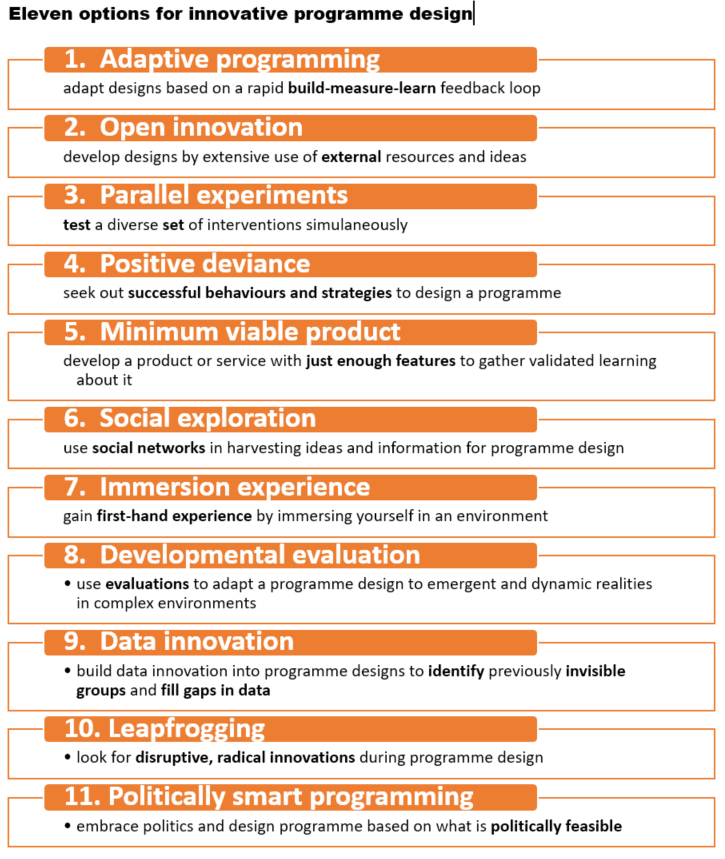It has always been clear to me: Monitoring and Evaluation depends to a large extent on how development or government programmes are planned and designed. That is why good M&E is strongly linked with good planning and design. In a way, programme design is a natural extension of our skill set in M&E.
That is why this blog post looks closer at the rapidly evolving landscape of options for innovative programme design.
DRIVERS OF INNOVATION
In my view, we have recently seen such a push for innovation in programme design for three reasons:
- Disillusion with linear models: Linear planning tools such as logical frameworks and linear theories of change are ineffective in a more complex, complicated or chaotic context. If you are not yet convinced, look at Ben Ramalingam’s comprehensive critique of current planning models (1).
- Complexity and wicked problems: Genuine progress toward sustainable development is increasingly complex: solutions are not simple or obvious, those who would benefit are the ones who most lack power, those who can make a difference are disengaged, and political barriers are too often overlooked. Look for example at the Manifesto ‘Doing Development Differently’ manifesto from 2014. That is why programme design must increasingly cope with ‘wicked’ problems: problems that are difficult to define clearly, are deeply interconnected, and are driven by many factors and unforeseen events.
- The data revolution: The world has been – and still is – undergoing a data revolution with far-reaching consequences for programme design: We now live in a world where 90 per cent of the data out there today has been created in the last two years alone. Every minute, more than 270,000 tweets get published worldwide, Google receives no less than 4 million search queries, and over 200 million emails are sent.(2)
CHALLENGES TO INNOVATION
Despite this push, development organizations and governments have mostly kept more innovative programme designs contained in ‘innovation labs’ and small pilot projects. There are significant challenges to innovative programme design. Three reasons stand out in my view:
- Mindset: Many of these innovations require ‘unlearning’ of the traditional, linear design approach based on a chain of results.
- Rules and regulations: Many of these innovations may be difficult to carry out within the current rules and regulations for programme design and implementation.
- Donor requirements: Testing these innovations may require flexibility by the donor.
ELEVEN OPTIONS FOR INNOVATIVE PROGRAMME DESIGN
In my view, there are eleven concrete options for innovative programme design in complex, complicated or chaotic settings to consider for governments and development organisations:

Sources:
(1) Aid on the edge of chaos: rethinking international cooperation in a complex world, Ramalingam 2013
(2) Can big data help us make emergency services better? David Svab/Brett Romero, 20/04/2016
What to learn more about how to plan, monitor and report on results? Check out our detailed video course on Practical Results Based Management on Udemy.